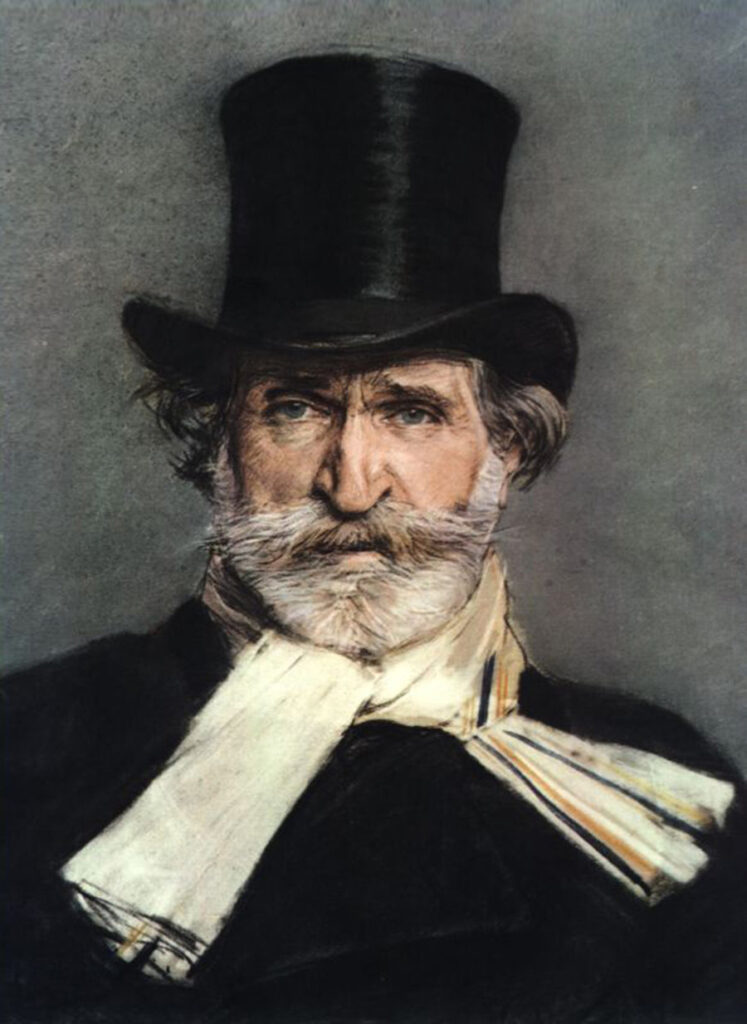
Guiseppe Verdi by Giovanni Boldini, credit Wikipedia
Verdi’s Luisa Miller
Glyndebourne, Saturday 7th August 2021, reviewed by David Truslove
Glyndebourne is in full swing this summer after reopening its doors in May with Káťa Kabanová. Since then, there’s been Il turca in Italia and Così fan tutte. Luisa Miller, Verdi’s middle period opera first performed in Naples in 1849, is currently receiving its debut at this Sussex venue. Linking all four stage works is the conflict between love and duty. Glyndebourne’s Artistic Director Stephen Langridge suggests that the “institution of marriage often represents the duty aspect, an opposing force to unruly anarchic romantic love”. This antagonism is at the heart of Luisa Miller.
Based loosely on Friedrich Schiller’s tragedy Kabale und Liebe (Conspiracy and Love), Luisa Miller is rich in human detail and powerful emotions, but it also focuses on class conflict and the corruption of power. Indeed, Verdi’s work closely follows the Year of Revolution (1848) and a period of bitterly resented despotism of King Ferdinand II. Power struggles emerge in Luisa Miller when Rodolfo, the son of the tyrannical Count Walter, challenges his father’s plans for him to marry the duchess Frederica. But Rodolfo is in love with the young country girl Luisa, the daughter of Miller, an old soldier who is one of the Count’s tenants. Abduction, blackmail and betrayal ensue and when the truth is finally disclosed the two lovers drink from a poisoned cup (Luisa unwittingly) and Rodolfo kills Count Walter’s henchman, the scheming Wurm.
This tale of social injustice and thwarted marriage is much more than a domestic soap opera. Yet director Christof Loy, working remotely from Austria, and designer Johannes Leiacker, present little more than bare white boxes. It’s a less is more approach with a staging so minimal that one can only imagine the 18th century Tyrolean village where the opera is located. Any class distinctions are ironed out by the one-size-fits-all darkly contemporary formal attire (Ursula Renzenbrink). And the vast empty spaces, save a table and wall-hung crucifix, provide no clue to setting or society. Spring flowers strewn around a slumbering Luisa in the opening Sinfonia offer sharp relief and presage the tragic denouement. A glossy, high concept production this is not. Instead, Loy’s stark structures, strikingly lit by Olaf Winter, act like a mirror and appear to be designed to reflect ourselves in the interaction of the on-stage relationships.
These are all superbly realised in a work of accumulating emotional drama, made more impactful by the absence of clutter and by consistently involving performances. Chief amongst these from a cast drawn mostly from eastern Europe is the revelatory Armenian Mané Galoyan in the title role. Her lyric soprano can traverse tender intimacy to raging fury within the space of a few bars. A diminutive and vulnerable figure, Galoyan holds you in the palm of her hand with her feathery-light coloratura, room-stilling in her Act III duet with Vladislav Sulimsky’s warm toned Miller, here finally showing his paternal sympathies.
He and Russian bass Evgeny Stavinsky as the imperious Count Walter (“My word is law”) make a well-matched pair in their Act II duet. Meanwhile, Krzysztof Bączyk’s sullen and conniving Wurm and Nadezhda Karyazina’s authoritative Federica both command the stage, the latter notable for her glamorous dress and fulsome mezzo, seemingly able to plumb bottomless depths below the stave. But it’s above the stave that American tenor Charles Castronovo compels as Rodolfo, delivering grief and ardour with heartfelt sensitivity for the score’s celebrated “Quando le sere al placido”. In the cameo role of Laura (Luisa’s friend), Carrie-Ann Williams leaves her mark at the start of Act III with just a few lines of exquisite singing.
No less refined is the Glyndebourne chorus singing from a rehearsal room, their stage presence replaced by a handful of silent actors as maids and villagers. Performing from Tony Burke’s orchestral reduction, Enrique Mazzola draws plenty of energy and momentum from a slimmed-down London Philharmonic Orchestra (clarinet solos a particular joy), bringing Verdi’s oft-neglected work out of the shadows to reveal a gripping masterpiece. In summary, a standout show, not to be missed.
Further performances until the end of August










